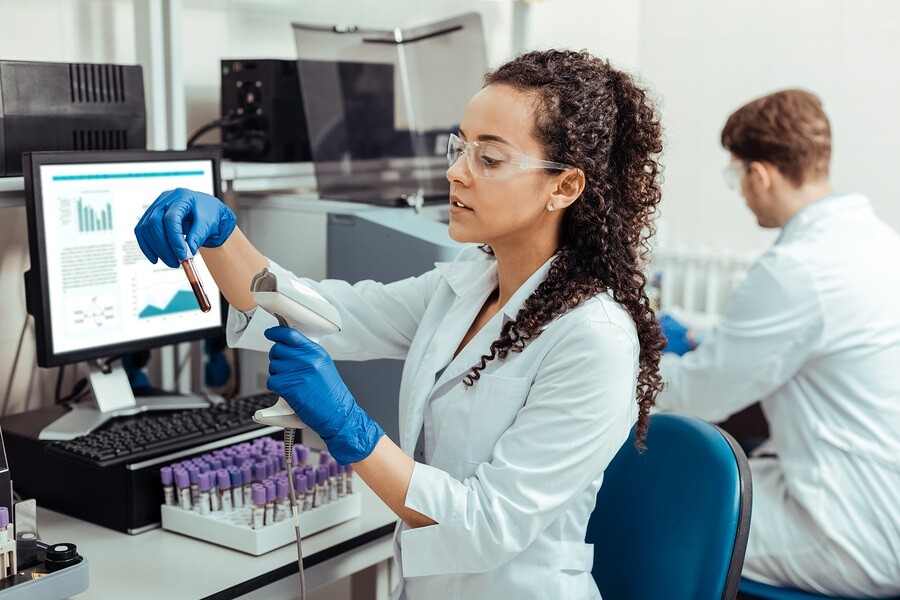Storing biological samples takes up valuable space and resources and can be very expensive. Holding your biological samples in off-site storage facilities may free up space and administrative resource. However, you still end up paying a considerable amount.
Biological samples that come into your laboratory for use in research are often used immediately or stored for only a short period. Plus, you may transfer samples that are surplus to requirements to other department or simply destroy them.
In contrast, as a Biobank, biorepository or clinical trials lab you may store biological samples for long periods of time.
Whether you are storing biological samples for short or longer periods of time labelling your samples appropriately will help you considerably reduce costs and improve efficiency. And the same can be said even if you are shipping them out to long-term storage facilities.
Handwritten labels on samples using permanent markers – not us!
If you recognise any of the following you are not alone:
- samples stored in boxes that have their contents written on using permanent markers;
- vials with illegible, handwritten labels;
- bags containing a random assortment of tubes with the name of the researcher written on the bag;
- vials with missing labels that fell off some time ago;
- samples with non-unique reference numbers written or printed on them;
- the sample or the reference number is recognisable, but you have no idea who the sample belongs to, whether it is suitable or if you can legally use it.
However, you may be surprised to learn that these challenges don’t just affect small labs.
More than just printing a label
There are an assortment of label generators and printers available as well as pre-barcoded vials and tubes. Making sure your biological samples and racks or boxes have unique barcode labels associated with them is the first step to improved sample management and identification. Consistently recording these barcodes along with their associated sample details (such as tissue type, storage location and sample expiry/retention date) in a searchable database allows your team to quickly identify material and assess its viability.
Advanced sample management software provides additional capability by capturing detailed sample and donor profiling information along with informed consent options. If you are using pre-barcoded labels, sample management software gives you reference fields to store the tube identifiers against each sample. Alternatively, these applications can generate unique references for each biological sample. You can then use this information to generate 1D and 2D barcode labels in the system and, where appropriate, include human-readable text. In addition, integration with label generating software, such as BarTender™ or Brady™, can provide enhanced flexibility and functionality when creating labels.
Barcode labels are not just generated for individual biological samples. You can also create them for your freezers, racks, shelves, towers, and boxes. With sophisticated sample management and laboratory information management software (LIMS) facilitating searches using barcodes, your team can see exactly what is being stored within each location.
How can sample identification in a sample management system help my lab?
The benefits of improved sample identification within sample management software include:
- Saving time
- identifying samples without having to find the right person to ask;
- Saving costs
- understanding what is in your inventory and avoiding buying surplus samples;
- Improving quality
- scanning racks and boxes to audit your inventory;
- using scanners to automatically update your inventory data;
- automated sample movement tracking using hand-held or rack scanners;
- Improving efficiency
- scanning samples and freezers to check in/out/move samples;
- Improving compliance
- scanning samples to check consent information before sample use;
- consistent and accessible information to hand during inspections/audits.
Whether you are a small lab or multinational, global corporation, being able to quickly and easily identify what is in your sample inventory, where it is stored, how it can be used and how long it can be stored, is invaluable information. Barcoding or correctly labelling your biological samples is the first step on the road to a trustworthy sample inventory that helps you to achieve your objectives.
